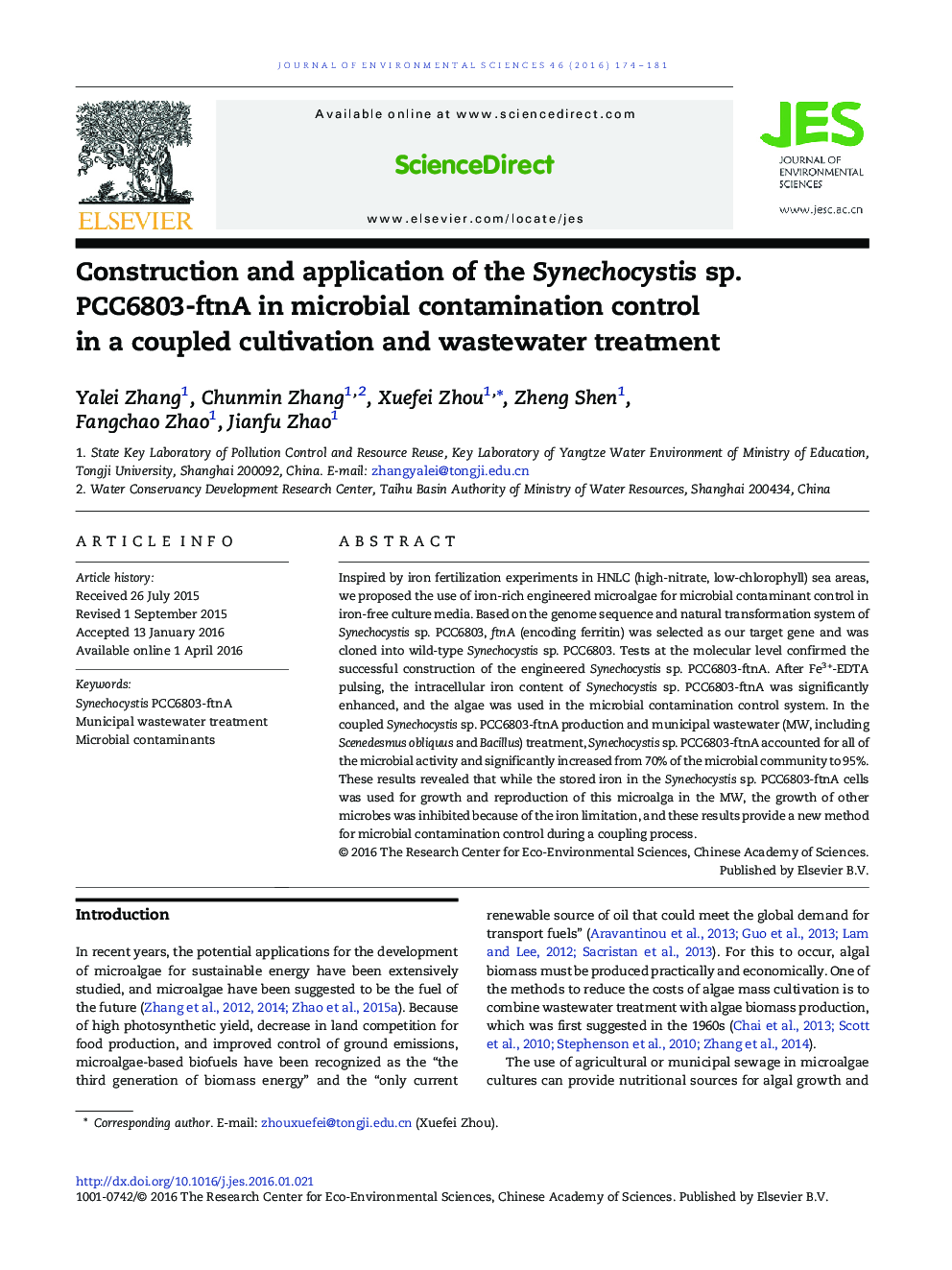| Article ID | Journal | Published Year | Pages | File Type |
|---|---|---|---|---|
| 4453639 | Journal of Environmental Sciences | 2016 | 8 Pages |
Inspired by iron fertilization experiments in HNLC (high-nitrate, low-chlorophyll) sea areas, we proposed the use of iron-rich engineered microalgae for microbial contaminant control in iron-free culture media. Based on the genome sequence and natural transformation system of Synechocystis sp. PCC6803, ftnA (encoding ferritin) was selected as our target gene and was cloned into wild-type Synechocystis sp. PCC6803. Tests at the molecular level confirmed the successful construction of the engineered Synechocystis sp. PCC6803-ftnA. After Fe3 +-EDTA pulsing, the intracellular iron content of Synechocystis sp. PCC6803-ftnA was significantly enhanced, and the algae was used in the microbial contamination control system. In the coupled Synechocystis sp. PCC6803-ftnA production and municipal wastewater (MW, including Scenedesmus obliquus and Bacillus) treatment, Synechocystis sp. PCC6803-ftnA accounted for all of the microbial activity and significantly increased from 70% of the microbial community to 95%. These results revealed that while the stored iron in the Synechocystis sp. PCC6803-ftnA cells was used for growth and reproduction of this microalga in the MW, the growth of other microbes was inhibited because of the iron limitation, and these results provide a new method for microbial contamination control during a coupling process.
Graphical abstractFigure optionsDownload full-size imageDownload as PowerPoint slide
